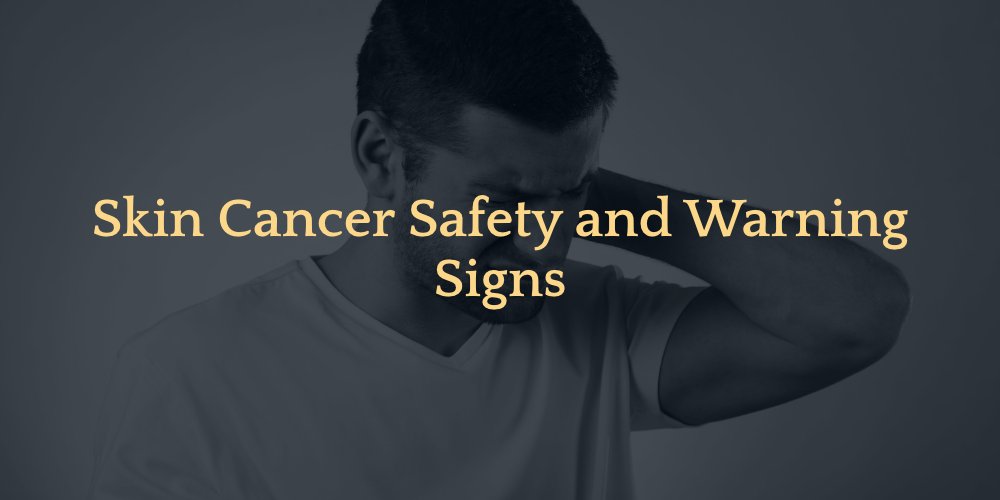No recovery • no fee
480.991.7677
scottsdale • phoenix
Phoenix Skin Cancer Attorney
Skin cancers are common; they are the most frequently occurring of all types of cancer—one third of the total cases of cancer in the U.S. Fortunately, when found early, skin cancer is very treatable. Skin cancers include basal cell carcinoma, squamous cell carcinoma, and malignant melanoma, the least common but deadliest type. While all skin cancers can be disfiguring, an untreated melanoma that is allowed to metastasize to other sites in the body is difficult to cure and has a low survival rate. If you or a loved one has suffered from a misdiagnosis, a Phoenix skin cancer attorney at the Knapp & Roberts Medical Malpractice Law Firm can help you hold the doctor accountable. Early detection is absolutely essential, and a doctor who fails to diagnose a visible melanoma may be held liable for your damages through a medical malpractice legal action.
If you have consulted a doctor in Arizona about an unusual mole on your body, or if you scheduled a skin cancer screening with a dermatologist, and a mole was overlooked that turned out to be a serious skin cancer or a precancerous condition, and you now are suffering from an advanced stage melanoma, you may have a case of medical malpractice. Any suspicious looking mole should be biopsied to determine if it is cancerous and removed before it spreads to other sites in your body. Failing to order a biopsy or to properly interpret the results of one may well indicate that the doctor was negligent, and that you did not receive the appropriate standard of care. If the laboratory performing the biopsy failed to report the existence of cancerous or precancerous cells to your doctor, they might also be found negligent.

Why Your Doctor May Have Incorrectly Diagnosed or Missed a Skin Cancer
These medical errors might have led to a skin cancer being overlooked or misdiagnosed:
- The doctor only considered your family history and risk factors
- The doctor failed to refer you for further testing, based on visible symptoms
- The examination missed some areas of your body and the cancer was overlooked
- A laboratory error occurred and you were not informed of the cancer
While melanoma is the most likely skin cancer to threaten your life, a doctor’s failure to diagnose a basal cell or squamous cell carcinoma could also lead to your having to endure surgeries and disfiguration, which open up the possibility of surgical complications and other detrimental consequences. These scenarios would not even considered if the cancer had been diagnosed at an earlier stage.
Liability in Missed Skin Cancer Diagnoses
Doctors and other medical providers are held to a higher standard of duty when it comes to treating patients. While most liability cases require only showing that the party at fault failed to take reasonable measures to prevent an injury, a doctor’s duty of care is to treat a patient to the industry-accepted standard within the medical community. If a doctor failed to treat you in the manner that another reasonable medical provider would have under the same circumstances, they are liable for your economic damages and non-economic damages like pain and suffering. Proving liability for medical malpractice in a missed skin cancer claim requires demonstrating the following:
- That the doctor had a duty of care to treat you or your loved one within the accepted standard of care set by the medical community
- That they breached this duty of care by an act of negligence or a medical mistake
- That the breach of that duty directly caused your injury—in this case, a more advanced cancer
- That the injury caused real damages
When a trusted medical provider’s negligence causes harm to a patient, their medical malpractice insurance must pay out on the victim’s claim for damages.
The ABCDEs of Skin Cancer
Unlike other types of cancer with tumors that develop internally, skin cancer develops on the surface of the skin where it’s easily visible and entirely treatable when caught in the earliest stage. Even deadly melanoma can be cured with a simple excision if properly diagnosed in stage one when the cancer cells remain on the surface of the skin and haven’t yet extended through the layers of the skin and into the fatty tissue and lymphatic system below. No doctor should miss the early signs of melanoma. What’s more, you can monitor your own skin and report suspicious changes to your doctor, including the early warning signs of melanoma. These signs are easy to remember as the “ABCDE’s” of melanoma:
- A is for asymmetry: when one half of a mole, freckle, or beauty mark doesn’t match the other side in size, shape, or color, it could be a sign of developing cancer cells
- B is for borders: when a spot on the skin has ill-defined borders such as uneven, scalloped, blurred, or irregular edges, it could be a sign of skin cancer
- C is for color: if a mole’s color changes in any way, or if the color isn’t even but has varying shades, it could be a sign of developing skin cancer. Melanoma lesions could be any shade or combination of black, brown, tan, gray, or pink
- D is for Diameter: any mole or freckle that’s larger than the diameter of a pencil eraser should be checked regularly by your doctor or during a yearly exam with a dermatologist
- E is for evolving: any time you notice any change at all in the size, shape, or color of an existing mole, freckle, or birthmark, it’s important to point it out to your doctor. It’s also important to point out any new moles to your doctor.
If you self-examine your skin, you can be proactive in preventing all types of skin cancer. If you notice any of the above changes in a mole, it’s critical to see a doctor and request a biopsy.

The Stages of Melanoma
Doctors use a staging system to describe the progression of cancer in the body, including the deadliest form of skin cancer, melanoma. The chance of survival decreases as the stages of cancer progress. In melanoma, doctors use five stages to describe how far the skin cancer has advanced:
- Stage 0: (melanoma in situ, or in waiting) In this stage, the irregular skin cells are beginning to change into cancer cells but remain contained to the uppermost layer of the skin
- Stage 1: In this stage, the melanoma has spread below the top layer of the skin into the underlying layers but has not yet invaded the layer of fat below the skin. In stage 1, the cancer is still contained and has not spread to the lymphatic system
- Stage 2: In stage 2 melanoma, the tumor has invaded the dermis (the second layer of the skin) where the oil and hair glands originate but no cancer cells have yet been found in the lymph nodes. There may also be some ulceration of the original tumor
- Stage 3: In stage 3 melanoma, the tumor has invaded all layers of the skin and into the layer of fat and blood vessels below the skin, with or without ulceration. Biopsy of local lymph nodes also reveals the presence of migrated cancer cells, or there is evidence of migration through deposits of cancer cells elsewhere on the skin along the pathway to the local lymphatic system. The prognosis of patients diagnosed with stage 3 melanoma sharply declines
- Stage 4: In stage 4 melanoma, cancer cells have migrated to distant lymph nodes and/or to one or more other organs such as the brain, lungs, liver, and bones. The five-year survival rate of patients diagnosed with stage 4 melanoma is 15-20% with aggressive treatment including surgeries, chemotherapy, radiation, and immunotherapy.
Besides the traditional 1-4 cancer staging system, doctors use a separate system to define melanoma tumor depth or thickness known as Clark’s Level. Clark’s Levels divide the tumor’s progress into 5 levels for the five levels of the skin and should not be confused with the skin cancer’s stage. For instance, a stage 1 melanoma may have a Clark’s level of 4, meaning the tumor is still contained within the skin but has reached the 4th layer, or the bottom layer of skin above the fat.
When a doctor diagnoses melanoma in stage one, the survival rate is over 99%. Sadly, many missed diagnoses of this aggressive cancer result in advanced disease and poor survival rates.
Skin Cancer Awareness, Safety, and Facts
Skin cancer is the most common cancer in the United States, with 1 in 5 people diagnosed with this type of cancer by age 70—more than all other cancers combined. According to the Skin Cancer Foundation, more than 2 people per hour die of skin cancer in the U.S. Experiencing 5 or more sunburns during childhood and early adulthood doubles the chances of developing melanoma.
Preventing sunburn can reduce the risk of skin cancer, including deadly melanoma, but even tanning increases the chances of developing all types of skin cancer. Anytime the sun or UV tanning beds darken or change the color of the skin it’s a sign of damage on a cellular level. A UK study found that UV ray exposure increases the chance of melanoma by 86% and non-melanoma skin cancer results from sun exposure in an estimated 90% of cases.
You can minimize your chances of developing skin cancer by remembering the following precautions:
- Use a liberal application of a broad-spectrum SPF-30 sunscreen whenever you are exposed to the sun
- Wear sunscreen even on overcast days if you plan to spend time outdoors
- Reapply sunscreen every two hours, even if it’s waterproof
- Seek the shade between the hours of 10:00 AM and 2:00 PM
- Wear a hat and sun-protective clothing while enjoying outdoor activities
- Avoid tanning beds
- Don’t forget that sun exposure on bright snowy days is as damaging to exposed skin as it is on a hot beach
- Use self-tanning products instead of tanning outdoors or in tanning beds
- Perform regular skin self-exams. If you have many freckles, moles, and other spots, take photos annually to compare and look for any changes in appearance
- Have regular skin examines by a dermatologist, especially if you have a family history of skin cancer
Skin cancer treatments are often painful and disfiguring. Melanoma is an aggressive form of cancer, but it’s easily curable when caught in stage 1. If a doctor failed to diagnose your skin cancer and it advanced to a less easily treatable stage, they are liable for your damages, including pain and suffering and disfigurement compensation.
Get Experienced Legal Counsel
If your doctor has ignored symptoms of skin cancer and the disease has advanced to the stage where you need aggressive treatment and your life has been endangered, or if you have required chemotherapy, radiation, surgery, or other aggressive or invasive treatments, or if someone close to you has died wrongfully as a result of a missed melanoma diagnosis, you should consult with a medical malpractice attorney in Phoenix to learn if the doctor or laboratory appears to have been negligent, and you have a case to recover money for your damages. Developing a strong medical malpractice cases is demanding and requires an attorney with significant resources, including access to medical experts to support your case, and specific experience in pursuing recoveries for medical malpractice.
Recoverable Damages in Skin Cancer Malpractice Lawsuits
We trust our doctors with our lives. When a medical provider fails to treat us to the accepted standard of care within the medical community by failing to properly diagnose life-threatening or disfiguring skin cancer, and the result is a greater risk of terminal illness or lengthy, expensive medical treatment, the doctor is liable for your damages. With a successful medical malpractice claim, you could recover the following damages:
- Medical expenses
- Any future medical expenses related to the cancer
- Lost wages and future lost income
- Pain and suffering
- Disfigurement, loss of pleasure in life
- Anxiety, PTSD, depression
Skin cancer can be a terrifying experience, with painful treatments and potentially life-altering consequences. Malignant melanoma is especially aggressive and difficult to treat once it reaches stage 3, while it’s easily curable when caught in stage 1. If a doctor missed diagnosing skin cancer and put your life at risk, you deserve justice as well as compensation for your damages and a Phoenix medical malpractice attorney can help.
Top Phoenix Malpractice Attorneys Pursue Compensation for Failure to Diagnose
If you live in Phoenix, Scottsdale, Prescott, or the surrounding area and feel that you have suffered from a medical error on the part of your doctor, the team of Phoenix personal injury attorneys at Knapp & Robert want to talk to you. We have a powerful history of winning significant damage awards in complex and challenging medical malpractice cases. We have a team of seasoned medical experts on call to help pinpoint the error, establish causation, and testify as to the standard of practice that is required of any reasonably competent Arizona physician or healthcare provider. We often settle medical malpractice cases out of court, but whenever it is necessary to go to trial to get you the recovery you deserve, we are ready and willing to do so. We are always thoroughly prepared for trial and know how to present a compelling case to a jury.
As a client of Knapp & Roberts, you can expect caring and personalized service, prompt return of your emails and phone calls, and regular updates on the progress of your case.
Time to file a medical malpractice action is limited by Arizona law, so to protect your right to recover money for your damages, call us today for a free consultation.
Let us tell your story
we care, and we can help. Contact us 480-991-7677 or fill out the form below
The personal injury attorneys in Phoenix, Arizona, at Knapp & Roberts have the compassion and trial lawyer skills to tell your story to a jury. We will get to know you and your family so that we can help the jury understand what has happened to you and your family and how it has changed your lives. Obtain the compensation necessary for the injuries and losses you have suffered.
Bob L. - "Mr. Knapp helped me with decisions I did not know how to deal with until he gave me excellent legal and medical consultation."

